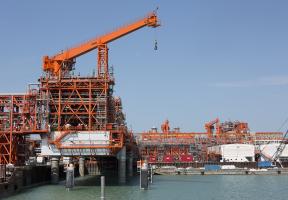Africa and Energy: A Case Study of Four Countries
15 min read

© Thinkstock - With its soaring demographics and significant economic growth, Africa is often considered to be the "continent of tomorrow".
By 2050, Africa will have a population of close to 2.5 billion people, compared to 1.2 billion in 2016. One out of four of the world’s citizens will be African. The continent still faces serious problems, such as malnutrition, poor education and health risks, but many of its 54 countries continue to experience strong growth. These two factors mean that Africa’s energy consumption will practically double by 2035. While this is a challenge, it is also an opportunity to make Africa “the continent of the future”. This case study looks at four countries – Egypt (North Africa), South Africa (Southern Africa), Kenya (East Africa) and Nigeria (West Africa) – each with its own specific characteristics.
Explore

Egypt: The Promise of Zohr
Despite the political turmoil that has rocked the country since the start of the century, Egypt’s economy has continued to grow at a solid pace: 5% a year before 2011, followed by a weaker, but never below 2%, increase after the fall of President Mubarak. Since General Sisi has come to power, growth has returned to around 4% a year, and the World Bank is forecasting that this figure will rise to up to 6% a year beginning in 20171. And that despite a sharp drop in tourism.

South Africa: Weaning Itself Off Coal
Following a few years of sluggish growth, in August 2016, South Africa pulled ahead of Nigeria, which has a population three times as large, to again become the largest economy in Africa, according to the International Monetary Fund (IMF). The country has a solid list of achievements: its demographic growth is now under control, its school attendance rate is the highest in Sub‑Saharan Africa, it attracts the most foreign investment on the continent and, according to statistics, 85% of its population has access to electricity1.

Kenya: Betting on Geothermal and Renewable Energies
A country situated at the crossroads of East Africa, Kenya has considerably expanded its services sector, in particular making huge progress in the field of digitalization and mobile telecommunications. Although more than one-third of its 46 million inhabitants still live below the poverty line, in recent years a middle class has emerged. This class is a key driver of domestic consumer spending, which contributes 75% of GDP growth1.





















